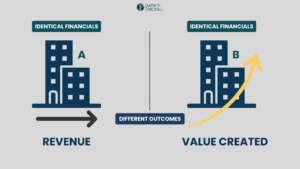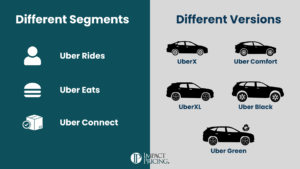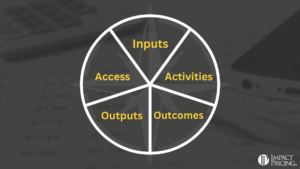In Value Tables – The Value Column (part 1) we focused on putting a dollar value on each PSR or Problem, Solution, Result. For now, this is most easily done when thinking about a single customer or buyer.
Recall the solar power example in part 1 where Bob calculated and believed he would save $50 per month by using solar. This is Bob’s value in use, the amount of money he believes he will get from going solar.
Our value table should already have a row that shows:
Problem: I pay too much for electricity.
Solution: Solar installation
Result: Lower monthly energy bills from the electric company
Value: $50 per month savings (from the calculations in part 1).
(I know that doesn’t look like a row, but it’s easier to type this way. The words to the left of the “:” are column headings.)
Notice we haven’t talked about competition. If there were no competitors in the market, how much would Bob pay to save $50? People are different, but let’s assume Bob would pay $25 per month to save $50. Great, we have our price. Let’s charge Bob $25.
But wait. There is a competitor down the street who only charges $20 per month. Why would Bob ever use us? In order to get Bob to pay us $25, we have to demonstrate that we are worth at least $5 more than the competitor. Bob is choosing between us and a competitor. To document this, let’s add a new column (section) to our value table called Value in Choice. In this section, we are capturing the value of our product relative to the competitor(s).
Let’s say our solar panels are more efficient than that $20 competitor. You did the math with Bob and discovered the competitor can only generate $40 per month savings because their panels are less efficient. Remember, you generate $50 per month for Bob. Now Bob has to decide, pay $20/mo for a savings of $40 or get a savings of $50 for the price of … That’s what we’re trying to figure out. This is value in choice.
To add this to the Value Table, first, change the title of the column we labeled “Value” in part 1 to “Value in use”. In this column, we put in the inherent value of using a product like this. Then, add a new column called “Value in Choice – Competitor 1”.
Next, add a new row to the Value Table:
Problem: I pay too much for electricity.
Solution: Our efficient solar panels.
Result: More electricity generated than the competitor
Value in Choice – Competitor 1: $10 per month more saving in electric costs
You can see this solar example at this location.
Now, when a salesperson finds herself in a competitive battle with competitor 1, she has the information of how our products are better and more importantly, how these differences are translated into dollars to the buyer.
It may be obvious, but you will want a separate Value in Choice column for each major competitor.
The important part isn’t the numbers you put in the value columns, it’s the business acumen it takes to get there. Your salespeople can use this as a guide to help them have conversations with their buyers. This is not a document to be published.
Now that you’ve included both values in use and value in choice in your value table, it’s time to go beyond just a single customer. We will do that next time.














